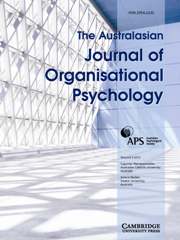Article contents
Best Practice Recommendations for Situational Judgment Tests
Published online by Cambridge University Press: 10 September 2015
Abstract
Situational judgement tests (SJTs) are increasingly popular as part of selection procedures because of their strong psychometric properties. SJTs present test takers with job-related situations and a series of potential responses. The aim of this review article is to provide evidence-based recommendations for practitioners who are considering implementing SJTs for their clients, as well as offering an analysis of some key issues for academics. This research provides a review of the literature on SJTs to answer three questions: (1) What is the difference between framing questions either as what should you do versus what would you do? (2) What is the difference between multimedia-based and text-based SJTs? (3) What is the best process for SJT creation? Following this, recommendations are provided as follows: That responses are optimally framed in terms of what a respondent thinks s/he should do, not what s/he would do; that multimedia-based SJTs are used in preference to text-based SJTs; and a ‘best practice’ process for creating an SJT is outlined. Finally, the review includes a discussion of implications for creating tests that are inclusive of different ethnic groups, as well as ethical issues relating to the use of SJTs in selection.
- Type
- Articles
- Information
- Copyright
- Copyright © Australian Psychological Society Ltd 2015
References
- 4
- Cited by


